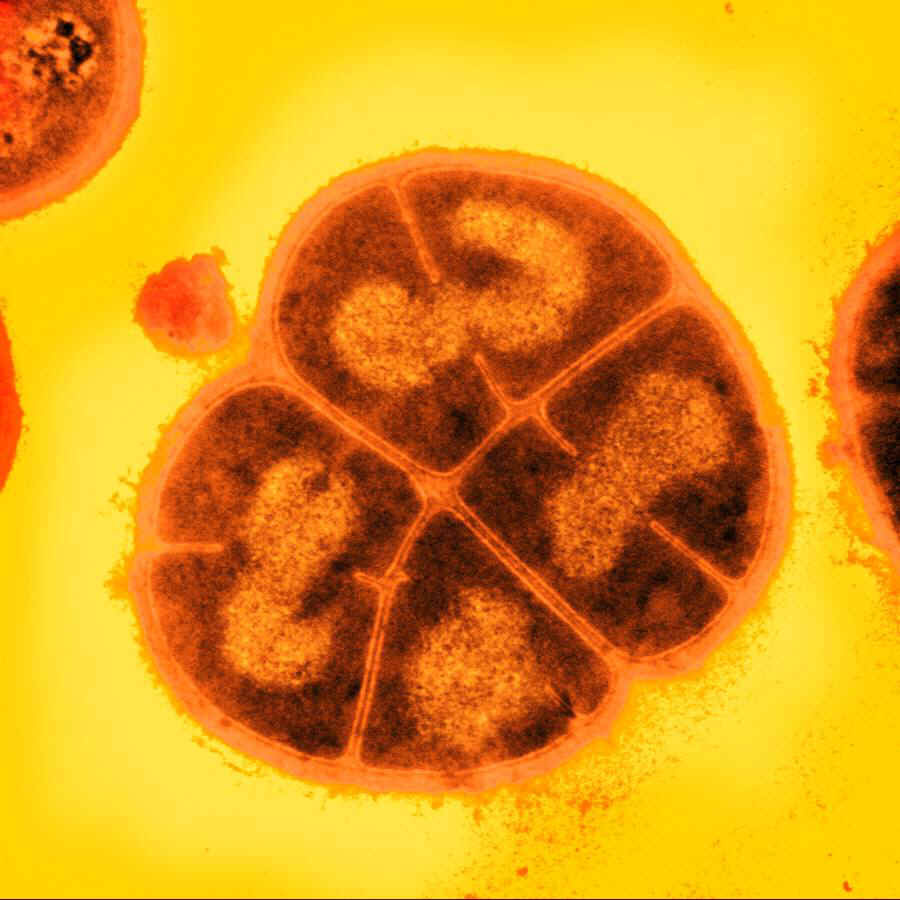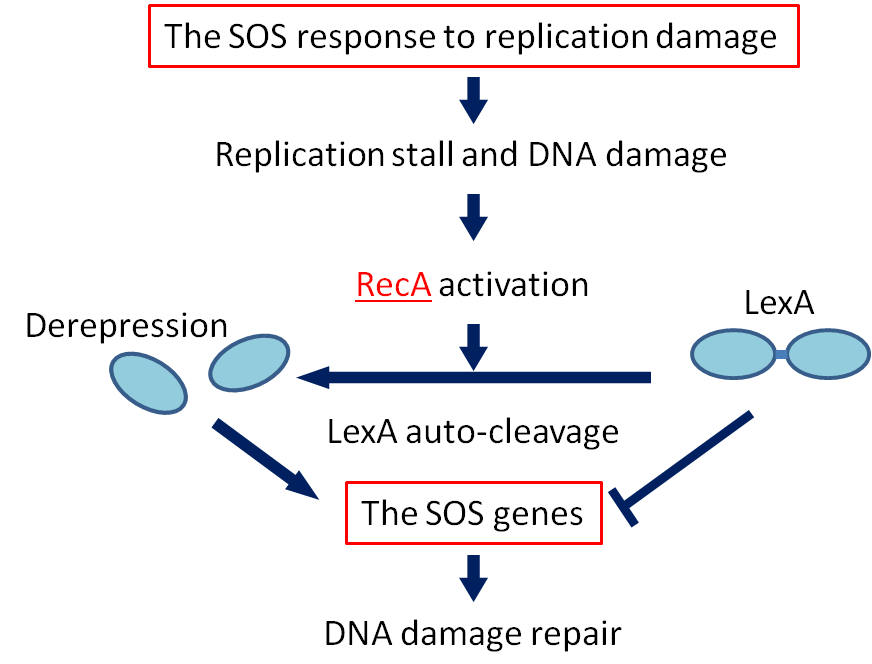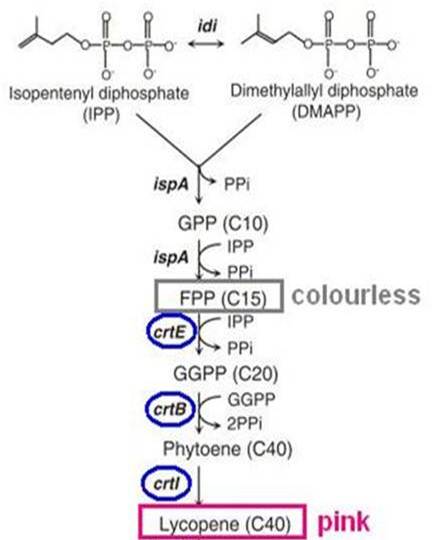Team:Osaka/Project/details
From 2011.igem.org
(→2. Detection of DNA damage) |
|||
| (6 intermediate revisions not shown) | |||
| Line 1: | Line 1: | ||
{{Osaka}} | {{Osaka}} | ||
| + | __NOTOC__ | ||
== Project Details== | == Project Details== | ||
=== 1. Damage tolerance=== | === 1. Damage tolerance=== | ||
| Line 19: | Line 20: | ||
<p>pprA</p> | <p>pprA</p> | ||
| - | + | A pleiotropic protein promoting DNA repair, role in radiation resistance of Deinococcus radiodurans | |
was demonstrated. | was demonstrated. | ||
pprA preferentially bound to double-stranded DNA carrying strand breaks, inhibited Escherichia coli exonuclease III activity, and stimulated the DNA end-joining reaction catalysed by ATPdependent and NAD-dependent DNA ligases. These | pprA preferentially bound to double-stranded DNA carrying strand breaks, inhibited Escherichia coli exonuclease III activity, and stimulated the DNA end-joining reaction catalysed by ATPdependent and NAD-dependent DNA ligases. These | ||
| Line 27: | Line 28: | ||
PprM (a modulator of the PprI-dependent DNA damage response) is a homolog of cold shock protein (Csp)PprM regulates the induction of PprA but not that of RecA. PprM belongs in a distinct clade of a subfamily together with Csp homologs from D. geothermalis and Thermus thermophilus. | PprM (a modulator of the PprI-dependent DNA damage response) is a homolog of cold shock protein (Csp)PprM regulates the induction of PprA but not that of RecA. PprM belongs in a distinct clade of a subfamily together with Csp homologs from D. geothermalis and Thermus thermophilus. | ||
PprM plays an important role in the induction of RecA and PprA and is involved in the unique radiation response mechanism controlled by PprI in D. radiodurans. | PprM plays an important role in the induction of RecA and PprA and is involved in the unique radiation response mechanism controlled by PprI in D. radiodurans. | ||
| - | |||
| - | |||
=== 2. Detection of DNA damage=== | === 2. Detection of DNA damage=== | ||
| Line 39: | Line 38: | ||
Bio-dosimeter must show visible sign as some signal of radioactive substance, therefore we decided to employ pigments as a reporter.</p> | Bio-dosimeter must show visible sign as some signal of radioactive substance, therefore we decided to employ pigments as a reporter.</p> | ||
| - | <p> | + | '''<p>pigment</p>''' |
| - | [[File:Pigment. | + | [[File:Pigment.jpg|280px|right]] |
| - | <p> | + | <p>In our previous project, "colrcoli", we intended to use ''E.coli'' as a paint tool. We studied pigment synthesis.</p> |
| + | <p>Carotenoid is a family of natural pigments. Many plants such as fruits and vegetables contain these pigments. For example, tomato has lycopene(red), carrot has carotene(orange). Xanthophyll(yellow) is found in almost all plants. | ||
| + | |||
| + | Biosynthesis of carotenoid pigments starts from FPP(FARNESYL DIPHOSPHATE). FPP is formed from isopentenylpyrophosphate(IPP) and dimethylallylpyrophosphate(DMAPP). IPP and DMAPP are formed in mevalonate pathway or nonmevalonate pathway. Mevalonate pathway is an important cellular metabolic pathway present in all higher eukaryotes and many bacteria. And nonmevalone pathway is to produce isoprenoids in plants and apicomplexan protozoa.(starting with pyruvate and glyceradehyde-3-phosphate). While the Mevalonate Pathway is present in all higher eukaryotes, the Non-mevalonate Pathway is present in E.coli. </p> | ||
<p>After IPP and DMAPP go on to form FPP, a series of enzymatic reactions convert the colourless FPP to a coloured compound: red lycopene.</p> | <p>After IPP and DMAPP go on to form FPP, a series of enzymatic reactions convert the colourless FPP to a coloured compound: red lycopene.</p> | ||
| - | <p> | + | <p>In this study, we used genes coding enzymes constructed by [https://2009.igem.org/Team:Cambridge CAMBRIDGE]. Please check parts details and [https://2009.igem.org/Team:Osaka our previous wiki] |
| + | <br> | ||
| + | <br> | ||
| + | <br> | ||
| + | <br> | ||
| + | <br> | ||
=== References=== | === References=== | ||
Latest revision as of 05:03, 5 October 2011
Project Details
1. Damage tolerance
The bacterium Deinococcus radiodurans shows remarkable resistance to a range of damage caused by ionizing radiation, desiccation, UV radiation, oxidizing agents, and electrophilic mutagens.It is an aerobic bacterium that is most famous for its extreme resistance to ionizing radiation; it not only can survive acute exposures to gamma radiation that exceed 15,000 Gy, but it can also grow continuously in the presence of chronic radiation (60 Gy/hour) without any effect on its growth rate or ability to express cloned genes. For comparison, an acute exposure of just 5-10 Gy is lethal to the average human.
Factors
recA
The D. radiodurans RecA protein has been characterized and its gene has been sequenced; it shows greater than 50% identity to the E. coli RecA protein. D. radiodurans recA mutants are highly sensitive to UV and ionizing radiation. In this context, early work by Carroll et al (1996) reported that E. coli RecA did not complement an IR-sensitive D. radiodurans recA point-mutant (rec30) and that expression of D. radiodurans RecA in E. coli was lethal. More recently, however, it has been reported that E. coli recA can provide partial complementation to a D. radiodurans recA null mutant (Schlesinger, 2007).
pprI
PprI, which is unique to D. radiodurans, is invoked by present data as the most important protein for radiation response mechanism. PprI can significantly and specifically induce the gene expression of recA and pprA and enhance the enzyme activities of catalases. These results strongly suggest that PprI plays a crucial role in regulating multiple DNA repair and protection pathways in response to radiation stress.
pprA
A pleiotropic protein promoting DNA repair, role in radiation resistance of Deinococcus radiodurans was demonstrated. pprA preferentially bound to double-stranded DNA carrying strand breaks, inhibited Escherichia coli exonuclease III activity, and stimulated the DNA end-joining reaction catalysed by ATPdependent and NAD-dependent DNA ligases. These results suggest that D. radiodurans has a radiationinduced non-homologous end-joining repair mechanism in which PprA plays a critical role.
pprM
PprM (a modulator of the PprI-dependent DNA damage response) is a homolog of cold shock protein (Csp)PprM regulates the induction of PprA but not that of RecA. PprM belongs in a distinct clade of a subfamily together with Csp homologs from D. geothermalis and Thermus thermophilus. PprM plays an important role in the induction of RecA and PprA and is involved in the unique radiation response mechanism controlled by PprI in D. radiodurans.
2. Detection of DNA damage
If DNA is damaged greatly by some factors such as UV radiation or chemicals, synthesizes of some damage-related proteins occur quickly. This reaction to DNA damage is SOS response.
RecA is a 38 kilodalton Escherichia coli protein essential for the repair and maintenance of DNA. RecA has multiple activities, all related to DNA repair. In the bacterial SOS response, it has a co-protease function in the autocatalytic cleavage of the LexA repressor and the λ repressor. LexA is expressed constitutively and prevents damage-related proteins to be expressed by binding to SOS box as a repressor. RecA is activated by binding to single-strand DNA caused by damage, and then, conducts activation of LexA protease. Decreasing LexA enable damage-related protein to be expressed.
According to this reaction of bacteria, we employ RecA as a key protein of our system.
RecA promoter(パーツ名) was employed to detect DNA damage. This promoter induces expression of its downstream genes by DNA damage. Bio-dosimeter must show visible sign as some signal of radioactive substance, therefore we decided to employ pigments as a reporter.
pigment
In our previous project, "colrcoli", we intended to use E.coli as a paint tool. We studied pigment synthesis.
Carotenoid is a family of natural pigments. Many plants such as fruits and vegetables contain these pigments. For example, tomato has lycopene(red), carrot has carotene(orange). Xanthophyll(yellow) is found in almost all plants. Biosynthesis of carotenoid pigments starts from FPP(FARNESYL DIPHOSPHATE). FPP is formed from isopentenylpyrophosphate(IPP) and dimethylallylpyrophosphate(DMAPP). IPP and DMAPP are formed in mevalonate pathway or nonmevalonate pathway. Mevalonate pathway is an important cellular metabolic pathway present in all higher eukaryotes and many bacteria. And nonmevalone pathway is to produce isoprenoids in plants and apicomplexan protozoa.(starting with pyruvate and glyceradehyde-3-phosphate). While the Mevalonate Pathway is present in all higher eukaryotes, the Non-mevalonate Pathway is present in E.coli.
After IPP and DMAPP go on to form FPP, a series of enzymatic reactions convert the colourless FPP to a coloured compound: red lycopene.
In this study, we used genes coding enzymes constructed by CAMBRIDGE. Please check parts details and our previous wiki
References
- [1] Y. Hua et al., “PprI: a general switch responsible for extreme radioresistance of Deinococcus radiodurans,” Biochemical and Biophysical Research Communications, vol. 306, no. 2, pp. 354-360, Jun. 2003.
- G. Gao, B. Tian, L. Liu, D. Sheng, B. Shen, and Y. Hua, “Expression of Deinococcus radiodurans PprI enhances the radioresistance of Escherichia coli,” DNA Repair, vol. 2, no. 12, pp. 1419-1427, Dec. 2003.
- I. Narumi, K. Satoh, S. Cui, T. Funayama, S. Kitayama, and H. Watanabe, “PprA: a novel protein from Deinococcus radiodurans that stimulates DNA ligation,” Molecular Microbiology, vol. 54, no. 1, pp. 278-285, Oct. 2004.
- S. Kota and H. S. Misra, “PprA: A protein implicated in radioresistance of Deinococcus radiodurans stimulates catalase activity in Escherichia coli,” Applied Microbiology and Biotechnology, vol. 72, no. 4, pp. 790-796, Oct. 2006.
- H. Lu et al., “Deinococcus radiodurans PprI switches on DNA damage response and cellular survival networks after radiation damage,” Molecular & Cellular Proteomics: MCP, vol. 8, no. 3, pp. 481-494, Mar. 2009.
- H. Ohba, K. Satoh, H. Sghaier, T. Yanagisawa, and I. Narumi, “Identification of PprM: a modulator of the PprI-dependent DNA damage response in Deinococcus radiodurans,” Extremophiles: Life Under Extreme Conditions, vol. 13, no. 3, pp. 471-479, May 2009.
 "
"



